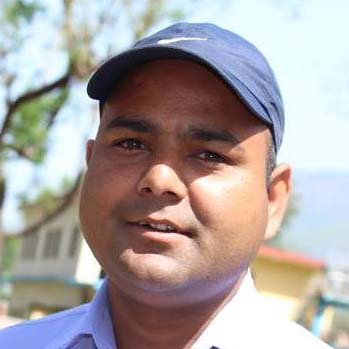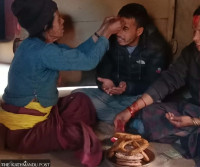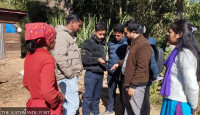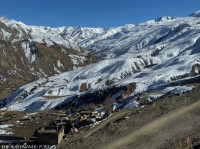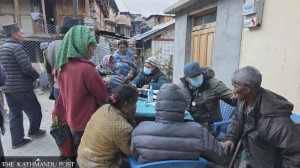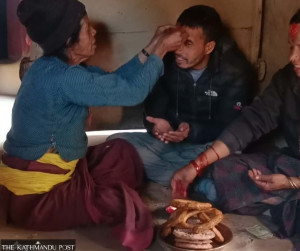Karnali Province
Digital Karnali campaign aims high in the province even as power and internet lag behind
Leaders are promoting the campaign through high-profile events, but many rural areas still lack basic infrastructure and connectivity.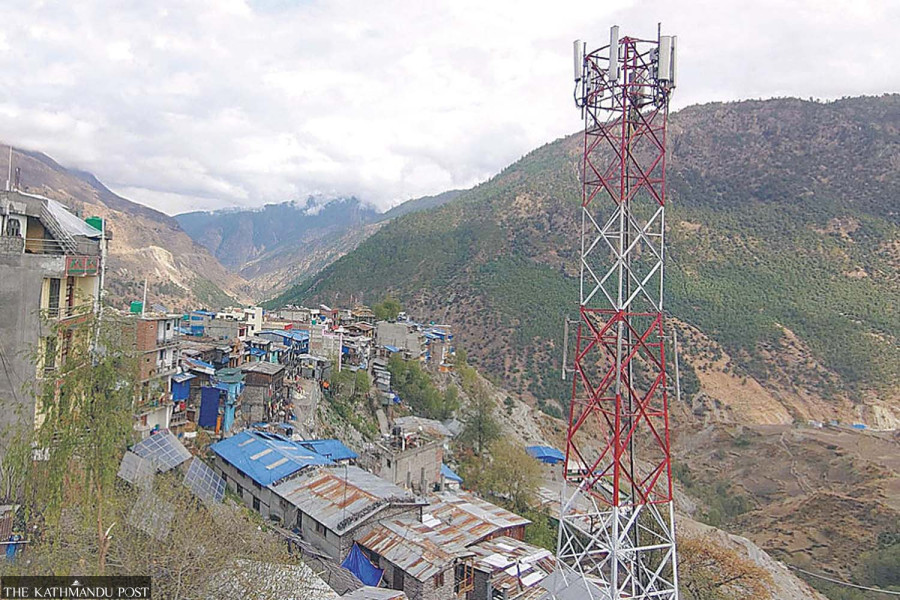
Krishna Prasad Gautam
Karnali Province’s ambitious ‘Digital Karnali’ campaign, launched to transform the region into Nepal’s first fully digital province, is facing growing criticism from local officials and citizens alike. While provincial leaders celebrate digital development in high-profile events, the region’s remote communities continue to grapple with chronic shortages of electricity, telephone, and internet access.
The provincial Ministry of Internal Affairs and Law, in collaboration with the ICT Foundation, hosted the Digital Karnali Conclave in Birendranagar on April 22-23. The two-day event, held in a luxury hotel, drew nearly 40 speakers and over 700 participants. However, many attendees questioned the event’s relevance given the harsh ground realities.
“Such a glamorous event is held in a star hotel in Surkhet, but our municipality lacks electricity, telephone, or internet services,” quipped Junu Shah, IT Officer of Kushe Rural Municipality in Jajarkot.
Despite such concerns, the ministry has allocated Rs1 million annually for this conclave and continues to prioritise digitalisation in its policies.
The campaign traces its origins to January 2018, when the provincial cabinet decided to make Karnali a digital province and formed an eight-member study committee led by then under-secretary Bhakta Bahadur Karki. The committee submitted its report in April 2018, which has guided subsequent digital programmes.
Since the fiscal year 2018/19, 'Digital Karnali' has been listed as a key priority in the provincial government’s policies. However, seven years on, the master plan for the campaign has yet to be finalised. For this fiscal year, Rs1.5 million has been set aside for its development.
“We believe the work will become more structured after the master plan is complete,” said Uttam Gautam, spokesperson for the ministry. He added that a draft bill for the Karnali Mass Communication and Information Technology Act is also under preparation.
The first five-year provincial plan had included ‘Digital Karnali’ among its six major priorities, a status it retains in the second five-year plan currently under construction. “We aim to make government services paperless, transparent, and cost-effective through increased use of digital systems,” said Ashok Nath Yogi, a member of the Karnali Province Planning Commission.
However, according to the Province Financial Comptroller Office, around Rs130 million allocated to digital Karnali programmes has remained unspent ‘frozen’ to date.
Digitalisation is proving difficult to implement in a region where even basic utilities remain scarce. Only 67.5 percent of households in Karnali have access to electricity, according to the Central Bureau of Statistics. In the remote districts like Humla, Mugu, and Dolpa, the numbers are even lower.
Durga Prasad Sapkota, a civil society leader from Jajarkot, bluntly summed up the disconnect: “Even the 132 kV transmission line in Birendranagar has been stalled for four years. In the hills and mountains, mobile towers rely on solar power. When it's cloudy, we lose network for days.”
In Humla, only 4.78 percent of residents have internet access. Out of 11,228 households, just 196 have landline connections, and only 397 people use the internet regularly.
Teachers like Indra Bhai from Maspur in ward 3 of Tajakot, walk a full day to reach their rural municipality centre at Chhaprela, to access the internet. “I’m preparing for Public Service Commission and Teachers Service Commission exams, but our village has no reliable phone network or electricity. I can only speak to my family through video calls once a week when I reach Chhaprela,” she said.
Basic tasks like submitting school documents also require travelling to centres with connectivity. "We must send most data online, but our village doesn’t even have mobile data," she added.
In Simkot, the district headquarters of Humla, residents like businessman Bijaya Lama face power cuts lasting 5 to 10 hours daily, making internet usage nearly impossible. “Even opening a browser takes five minutes. Some days, the phone network disappears entirely,” he complained.
Government offices are no exception. “Even small data entries take several minutes or sometimes hours,” said Ratan Nepali of the Hilsa–Simkot Road Project. “Sometimes I dictate documents over the phone to colleagues in Nepalgunj and Kathmandu.”
ADSL and WorldLink services exist in Humla, but locals say the latter is unaffordable. ADSL costs Rs 1,000/month, while WorldLink can go up to Rs10,000/month.
According to Ringzinammu Lama, acting head of Nepal Telecom's Humla office, "We have two 3,000-watt solar units, but once the sun sets, they’re useless. Fuel prices are too high to run generators all day. Without electricity, communication shuts down.”
Education is another area hit hard. In Mugu, the principal of Nepal Rastriya Secondary School in Sobhagaun, Mainadal Budha, said their computer lab is defunct due to lack of electricity. “To use the internet, we have to walk three hours to Gamgadhi,” he said.
Similarly, Chhiring Kyapne Lama, mayor of Mugum Karmarong Rural Municipality, shared that internet connectivity had adversely affected service delivery. “When the sun shines, WorldLink works. But with clouds or rain, we go without the internet for weeks. Even a 50MB file takes half an hour to download,” he said.
In Dolpa, only 643 residents out of 42,371 use the internet regularly. Despite some internet installations by Nepal Telecom, WorldLink, and Subisu, most private homes remain offline. Angad Kumar Rana, chair of Kaike Rural Municipality noted their internet has been down for nearly a month, making basic data entry impossible. “Most government software is built for urban use. Our phones don’t even work properly—how can we use the internet?” he asked.
Despite poor connectivity, the government is pushing forward with software adoption. According to Tulsi Prasad Acharya, Information and Technology Officer at the Ministry, most ministries are now prioritising electronic correspondence to make governance paperless. Systems such as PLMBIS (integrated accounting), PAMS (asset management), EMIS, and CQS+ have been introduced. Vehicle surveillance through Automatic Number Plate Recognition (ANPR) has started at Babai, the gateway to Karnali.
Digital literacy campaigns have also been extended to schools, and digital tourism information centres are planned. However, initiatives like Wi-Fi hotspots and CCTV installation remain limited to paper.
The Chief Minister’s Digital Education and Model School Programme, which evolved from a previously separate model school project, has also struggled. Last year, Rs140 million allocated to this programme was frozen. This year, Rs100 million has been allocated, with 13 schools (one each in most districts, two in Jajarkot and Rukum West) selected for tech-based classroom upgrades. Each school is set to receive Rs7 million to procure laptops, projectors, smart boards, and digital display boards.
But education experts remain unconvinced. “Most computer labs in the hills and mountains are unused due to lack of electricity, teachers, or even students,” said Min Bahadur Pun, a retired secondary school teacher. “These labs will end up abandoned again within a year or two.”
Despite criticism, Chief Minister and Minister for Internal Affairs and Law Yam Lal Kandel remains optimistic. “Karnali cannot become digital in just one year. But government programmes are gradually moving forward,” he said. “The master plan is under preparation, and laws will be created as needed. The next budget will also prioritise this campaign.”
As Karnali’s digital dream advances in theory but falters in practice, it remains to be seen whether the province can bridge the gap between ambition and infrastructure—or if ‘Digital Karnali’ will remain just another slogan.




 6.12°C Kathmandu
6.12°C Kathmandu